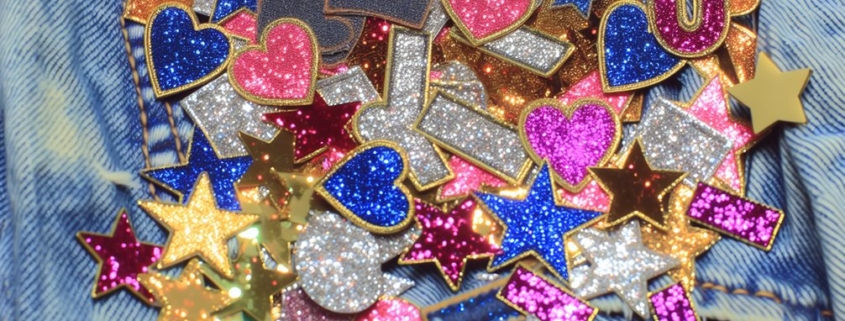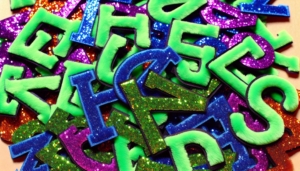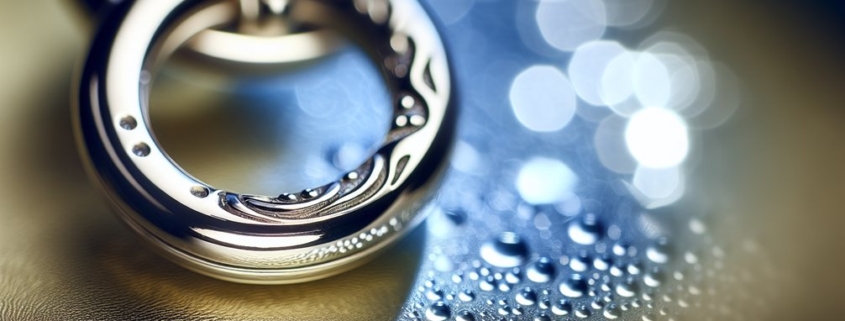5 Unique Glitter Patch Ideas for Fashion
in Custom PatchesGlitter patches represent a versatile and dynamic fashion tool with a myriad of applications across different segments of the industry. Denim jackets, for example, can be a good placement for glitter patching. From bags to belts, gaining an individual flair is awesome when customized with glitter patches. Sew-on patches on shoes can be affordable options for next-level DIYing. Above all, clothing pieces transform into fashion statements with well-applied patches. In addition, high fashion designers increasingly incorporate glitter patches into their collections, showing the trend’s edge and influence. The deeper exploration of these elements reveals an expansive array of creative opportunities.
Key Features
- Create a vibrant look by applying contrasting color glitter patches to a denim jacket.
- Personalize accessories like bags, hats, or scarves with customized glitter patches featuring your initials or favorite designs.
- Revamp old shoes by applying DIY glitter patches, reflecting your personal style and taste.
- Transform a simple t-shirt into a statement piece by adding glitter patches in unique shapes or letters.
- Incorporate high fashion trends by using sequin or holographic glitter patches on dresses or jeans.
1. Glitter Patch On Denim Jackets
The essence of these jackets lies in the placement of the glitter patches and the color combinations used, which make each piece unique.
Glitter patch placement is vital in determining the overall look of the jacket. Strategically placed patches can accentuate the design, making it more visually appealing. For instance, patches on pockets or collars can draw attention to these areas, adding a pop of color and sparkle.
Color combinations are another significant aspect of these jackets. The right combination can enhance the jacket’s aesthetic appeal. For instance, patches in contrasting colors can create a vibrant, eye-catching effect, whereas matching colors can give a more subtle, sophisticated look.
2. Customized Glitter Patch Accessories
The use of personalized glitter takes customization to another level, enabling the wearer to incorporate their choice of colors, designs, and even initials or names into their accessory.
The beauty of these glitter patch accessories lies in their versatility. They can be attached to various items such as bags, hats, scarves, and belts. This flexibility means they can be used to spruce up a casual outfit or add a touch of glam to formal attire.
The design options are limitless, ranging from bold, eye-catching designs to subtle, understated ones.
These glitter accessories, however, require careful handling to maintain their appearance. Regular cleaning is essential to keep the glitter sparkling, and care should be taken not to expose them to harsh conditions that can damage the adhesive.
3. DIYing Glitter Patch Shoes
The first step in the DIY glitter patch shoes project is sourcing the glitter patch materials. This includes the glitter patches themselves, which come in various shapes, sizes, and colors. The material can be purchased from craft stores or online.
Additional supplies needed are a strong adhesive, such as fabric glue, and a pair of tweezers for precision.
Understanding the glitter patch techniques is essential in achieving a desirable outcome. Start by cleaning the surface of the shoe where the patch will be applied. This guarantees the adhesive bonds properly.
Next, apply a generous amount of glue to the back of the glitter patch. Using the tweezers, carefully place the patch on the shoe and press down firmly. Allow it to dry completely before wearing.
This simple DIY project can transform any pair of shoes into a fashion statement. Now, step out in style and sparkle with every stride.
4. Statement Glitter Patch Clothing
Not limited to footwear, the application of glitter patches can markedly transform clothing items into extraordinary fashion statements, too.
- Denim Jackets: A classic denim jacket becomes a vibrant, unique piece when adorned with glitter patches. Whether placed on the back, front, or sleeves, these patches bring a distinctive touch that catches the eye.
- T-Shirts: Simple t-shirts can be given new life with the addition of glitter patches. Shapes, letters, or abstract designs, all in glitter, make for striking visual appeal.
- Jeans: Glitter patches on jeans add a fun, edgy vibe. Placed on pockets, knees, or randomly scattered, they create an eclectic look.
- Dresses: For a truly standout piece, attaching glitter patches on dresses, especially around the neckline or hem, creates an unforgettable statement.
The vast versatility allows for a wide range of design possibilities, promising to turn everyday items into fashion-forward pieces.
5. Glitter Patch Trends in High Fashion
Today, a significant number of high-fashion designers are incorporating glitter patches into their collections, underscoring a growing trend in the industry. This trend is not without precedent; it has roots in the glitter patch history that traces back to the rebellious fashion statements of the 1970s.
The glitter patch is now seen on everything from intricate evening gowns to everyday wear, giving traditional designs a unique twist.
To illustrate, here is a table of some popular trends:
Glitter Patch Type | Designer | Collection |
Sequin | Marc Jacobs | Spring 2021 |
Metallic | Chanel | Fall 2020 |
Holographic | Gucci | Summer 2020 |
Textured | Balmain | Winter 2021 |
These trends in glitter patch use reflect a vibrant and dynamic shift in the fashion industry, demonstrating the power of this unique design element to transform a piece of clothing into a work of art. The glitter patch, with its rich history and high fashion influence, is becoming an indispensable part of the modern fashion landscape.
Can I Machine Wash Clothes With Glitter Patches?
Yes, you can machine wash clothes with glitter patches. However, to preserve the glitter patch application, it’s recommended to turn the garment inside out and use a gentle cycle. Always check specific washing instructions.
Are Glitter Patches Skin-Friendly?
Generally, glitter patches are skin-friendly. However, sensitivity varies among individuals. Some may experience skin irritation due to the adhesive used in patch application. Always test on a small area first to guarantee compatibility with your skin.
Can I Use Glitter Patches on Leather Material?
Yes, you can use glitter patches on leather. However, to guarantee compatibility with leather care, it’s important to select the right type of patch and adhesive. Always test on a small area first.
Are There Eco-Friendly Alternatives to Glitter Patches?
Yes, there are eco-friendly alternatives to traditional glitter patches. Biodegradable glitter, made from plant-based materials, offers a sustainable solution for fashion enthusiasts seeking to minimize their environmental impact without sacrificing style.






 Custom Patches Mania
Custom Patches Mania






